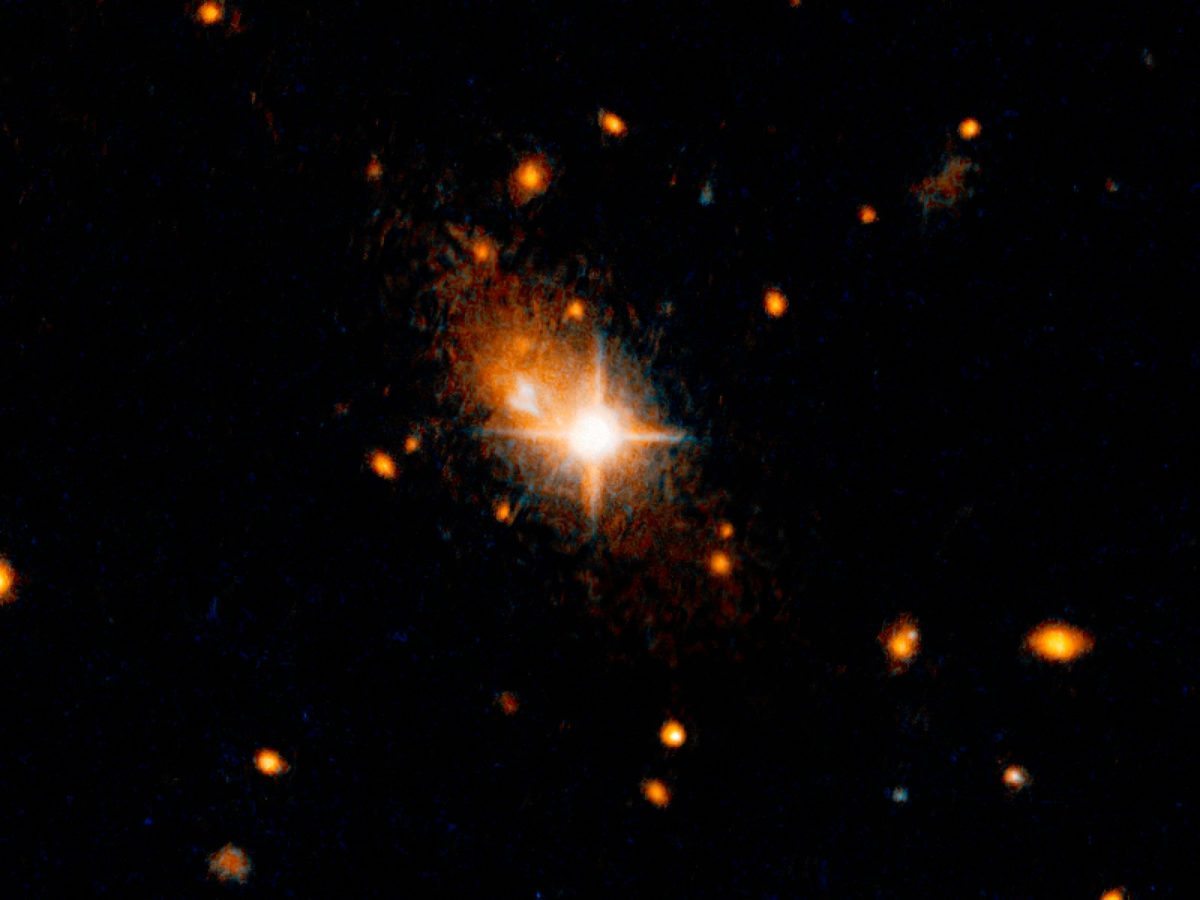Most galaxies like our Milky Way have a supermassive black hole in their core. They can have more mass than millions or billions of Suns. But there are a few spiral galaxies, such as the Triangulum galaxy, that has no supermassive black hole. Given that supermassive black holes form within galaxies, how could a galaxy possibly get rid of one? The answer could be gravitational waves.
Every now and then two galaxies can collide and merge. For example, the Andromeda galaxy and Milky Way are moving toward each other, and will collide in about 4 billion years. When two galaxies collide, their supermassive black holes can be caught in a spiral toward each other. As they orbit each other, their large masses produce strong gravitational waves, which eventually causes them to merge.

A diagram showing how two merging black holes can be ejected from a galaxy. Credit: NASA, ESA/Hubble, and A. Feild/STScI
We’ve observed the gravitational waves of merging black holes, but the gravitational waves of supermassive black holes would be much stronger. If the two merging black holes are roughly the same size, then the gravitational waves would be generated evenly in a range of directions. But if the black holes have very different sizes, then gravitational waves would be produced more strongly in one direction than others. This means more gravitational energy is being emitted in a particular direction, and as a result the black holes would be kicked in the opposite direction. This could be strong enough to kick a supermassive black hole out of the merged galaxy.
At least that’s been one idea, and new observational evidence seems to support it. A team using the Hubble space telescope have found a supermassive black hole moving away from a galaxy. You can see this as the bright object in the center of image at the top of the page. The black hole is bright because it’s actively consuming gas and dust. Behind the black hole is the fainter and diffuse galaxy 3C186. Given the structure of 3C186, it is most likely the result of two merged galaxies. This is exactly what we’d expect to see when merging black holes are kicked out of a galaxy.












Comments
Dr. Koberlein,
“..such as the Triangulum galaxy, that has no supermassive black hole.”. This gravitational wave process of ejecting a BH leaves the larger one behind. How does this process explain the Triangulum Galaxy lacking a SM BH?
Possibly. There’s evidence that Triangulum interacted with Andromeda, so that may have ejected its black hole.
The mechanism as described does not leave a BH behind, there is only one BH after the merger, which is kiked out. So just a merger with a smaller galaxy should be capable to kick out the BH.
The interaction with Andromeda (which I assumed to be not so tight to lead to a strong interaction of the central BHs so far) would only be an (alternative) explanation for the missing Triangulum BH, when the interaction lead to strong scattering, but no merger. Did you imply this?
I was also wondering, if there were 2 BH and they did not merge and only one is leaving, where is the other?
If Triangulum ejected it’s SMBH then is it wandering around the local group somewhere ?
Isn’t the central BH the object which binds a galaxy by it’s gravity, meaning it is it’s central object holding a galaxy together? Why aren’t the stars of the the galaxy ‘following’ the BH? Or differently asked: Can a galaxy be stable with no central BH in it’s center?
Black holes play a large role in the structure and evolution of galaxies, but they are not the gravitational glue of a galaxy the way a star is for a star system. For example, without even considering dark matter, the Milky Way’s supermassive black hole is roughly 4 million solar masses, but the Milky Way itself contains a couple hundred billion stars (most with masses less than a solar mass, but not by enough orders of magnitude to change the balance).